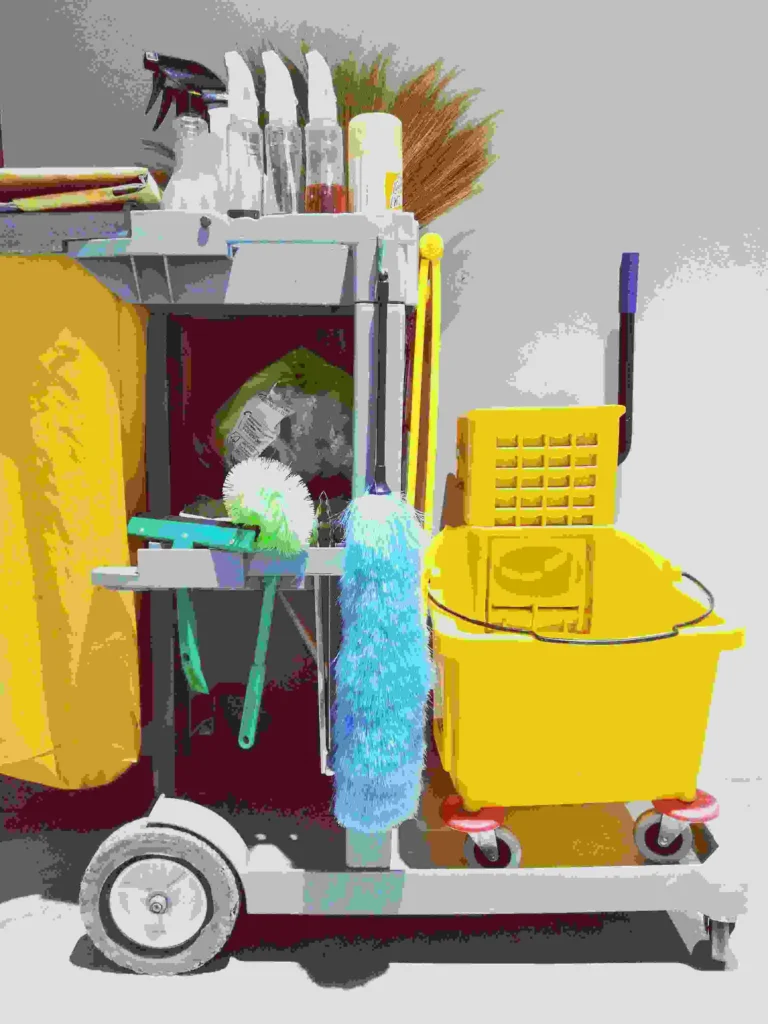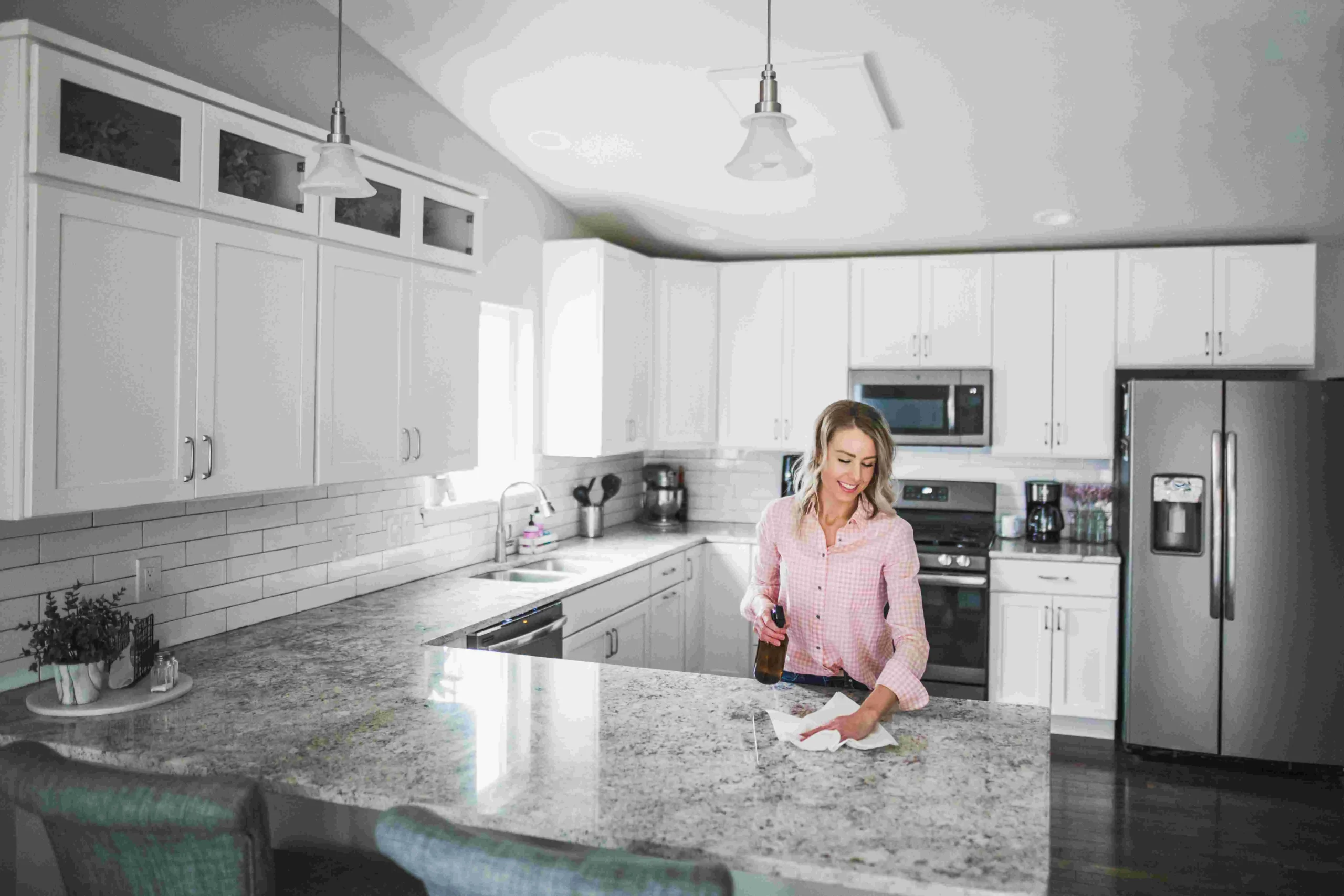Introduction
Have you ever wondered how to clean kitchen cabinets without damaging the finish or spending hours scrubbing?
Cabinets get touched the most in your kitchen, so they collect grease, dust, fingerprints, and sticky residue.
The good news is you don’t need harsh chemicals or a professional to make them shine again.
This guide covers daily cleaning tips, how to remove tough grease, care for wood finishes, and the best eco-friendly options.
Table of Contents
Why Regular Cabinet Cleaning Matters
Cabinets face daily exposure to cooking oils, steam, food splatters, and fingerprints. If you don’t clean them, grease can turn into sticky layers that attract dust and bacteria.
Cleaning your cabinets regularly prevents buildup, helps them last longer, and makes your kitchen look brighter and more welcoming.
How to Clean Kitchen Cabinets Daily Without Damage
For everyday care, use a soft microfiber cloth dampened with warm water and a drop of mild dish soap. Wipe down high-touch areas, such as handles, corners, and edges.
This prevents grime buildup and reduces the need for harsh deep cleaning later. Always dry cabinets immediately to avoid water damage.

How to Clean Kitchen Cabinets with Grease Buildup
Greasy cabinets are a common problem, especially near stoves. To remove grease:
- Mix warm water with dish soap (best degreaser for kitchen cabinets).
- For stubborn spots, try a vinegar-water solution or a baking soda paste.
- Spray gently, let sit, then wipe with a microfiber cloth.
✅ Pro tip: Use a commercial cabinet degreaser spray for heavy buildup, but choose one that’s safe for wood or painted finishes.
How to Clean Kitchen Cabinets Without Damaging Paint or Finish
Painted cabinets and wood finishes are delicate. Avoid harsh chemicals, such as bleach, ammonia, or abrasive pads. Instead, use:
- pH-neutral cleaners or mild dish soap.
- A soft sponge or microfiber cloth.
- Quick drying to prevent moisture absorption.
This way, you protect the finish and keep your cabinets looking fresh.
Natural Cleaners vs. Store-Bought Degreasers
When deciding between DIY cleaners and store products:
- Natural cleaners (vinegar, lemon juice, and baking soda) are eco-friendly, safe, and affordable.
- Store-bought degreasers work faster for stubborn stains, but must be chosen carefully to avoid damage.
Using both methods when needed helps keep your cabinets clean and protected. Cleaning Wood Kitchen Cabinets
Wood cabinets need extra care:
- Dust surfaces first.
- Use a diluted vinegar solution or a gentle wood cleaner.
- Wipe with a soft cloth, being careful not to apply excess water.
- Apply mineral oil or wood polish occasionally to restore shine.
This helps prevent warping, fading, or cracking, so your wood cabinets stay beautiful for years.
How to Clean Painted Kitchen Cabinets Safely
Painted cabinets can chip if scrubbed too hard. Follow these steps:
- Use warm, soapy water and a microfiber cloth.
- Test cleaners on a small hidden area before applying widely.
- For stains, try a baking soda paste—gentle yet effective.
This keeps paint vibrant and chip-free.
Easy Steps for Cleaning Laminate Cabinets
Laminate is durable but prone to scratches:
- Wipe with mild dish soap and water.
- Avoid abrasive pads that scratch surfaces.
- Tackle stains with baking soda paste or vinegar spray.
This keeps the laminate looking smooth and new.
Cleaning Cabinet Hardware, Knobs & Hinges
Cabinet hardware collects oils from hands and cooking residue. Unscrew handles occasionally and clean them with warm, soapy water. For tough grime, use vinegar or a mild degreaser. Don’t forget hinges—dust and grease here can affect the cabinet doors’ opening smoothly.
Interior Shelf & Cabinet Underside Cleaning
Most people focus only on cabinet exteriors. However, the inside shelves and undersides also require cleaning. Remove everything, vacuum any crumbs, and wipe down surfaces with a mild cleaner. Use cabinet liners to protect shelves from spills and make future cleaning easier.
Best Tools & Supplies for Kitchen Cabinet Cleaning
Keep these tools handy:
- Microfiber cloths & sponges
- Soft-bristle brush for corners
- Dish soap or pH-neutral cleaner
- Vinegar and baking soda
- Degreasing spray (for heavy grease)
These essentials make cleaning faster and more effective.

How to Maintain Sparkling Cabinets Longer
- Wipe spills immediately.
- Use range hoods while cooking to reduce grease.
- Install handles/knobs to prevent fingerprints.
- Clean weekly with a quick wipe-down.
Preventive care means less scrubbing later and cabinets that stay beautiful longer.
Common Mistakes to Avoid When Cleaning Cabinets
- Using bleach or ammonia (they damage finishes).
- Scrubbing with steel wool or abrasive pads.
- Leaving cabinets wet (causes warping).
- Ignoring hardware, hinges, and edges.
Avoiding these mistakes ensures cabinets last for years.
Conclusion
Learning how to clean kitchen cabinets the right way keeps your kitchen looking spotless, hygienic, and stylish.
Whether wood, laminate, or painted, the key is consistent cleaning with gentle methods. With the right supplies, natural cleaners, and preventive care, your cabinets will look fresh for years.
FAQs
Q1. What is the best cleaner for greasy kitchen cabinets?
A mix of dish soap and warm water works best. For heavy grease, use a safe degreasing spray or a vinegar solution.
Q2. How often should I clean kitchen cabinets?
Perform a quick wipe weekly and a deep clean every 2–3 months, depending on your cooking frequency.
Q3. Can I use vinegar on wood cabinets?
Yes, but always dilute with water and dry immediately to avoid damage.
Q4. How do I clean sticky residue off cabinets?
Use a baking soda paste or rubbing alcohol on a soft cloth for sticky spots.
Q5. What’s the safest way to clean painted cabinets?
Use mild dish soap and water, along with a microfiber cloth, to avoid harsh chemicals and excessive scrubbing.



